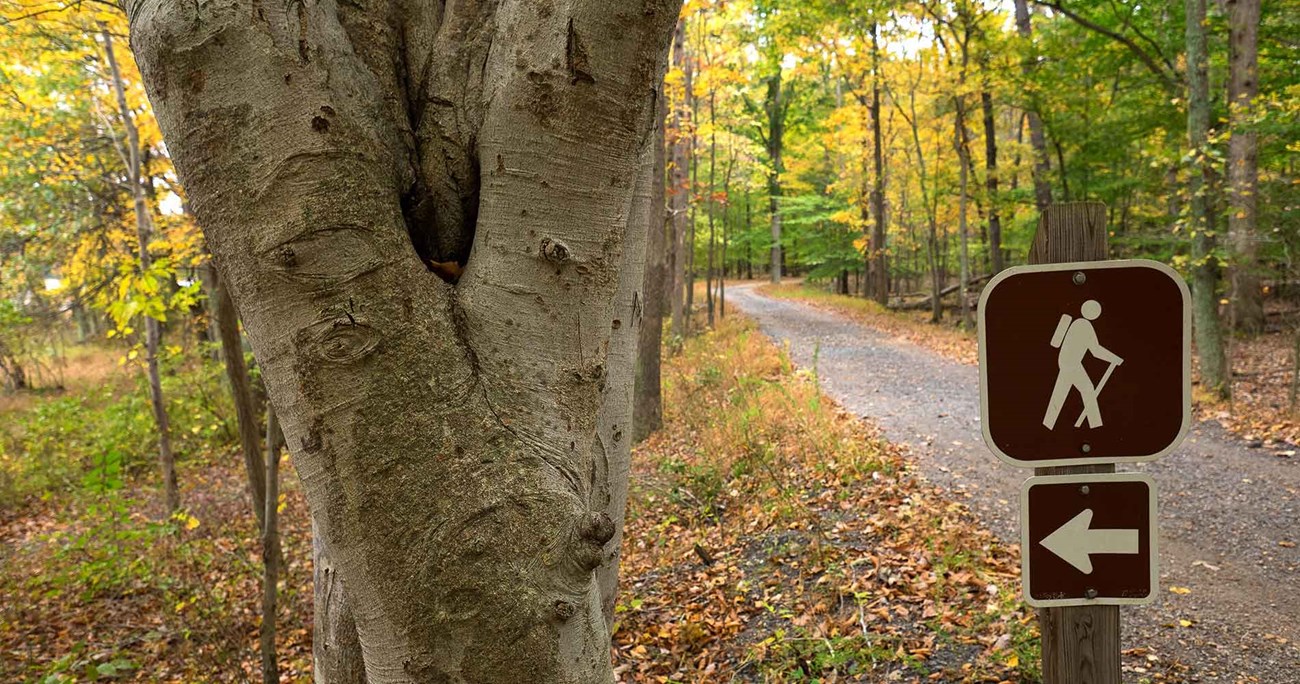Last updated: October 2, 2024
Article
Exploring the Patuxent Research Refuge

A turn or two off the Baltimore-Washington Parkway puts visitors on Scarlet Tanager Loop, a tree-lined winding road that leads through mature trees and ends in about two miles at a beautiful, interactive visitor and conference center.
Miles of trails meander around several lakes, where lilies bloom and Canada geese feed. In winter, eagles and herons swoop across the sky, and it’s not unusual to see the namesake tanager songbird dart in and out of the forests in which it makes its summer home.
The Patuxent Research Refuge, managed by the U.S. Fish and Wildlife Service, lacks a regional reputation for beauty and wildness like that of the Blackwater National Wildlife Refuge on the Eastern Shore, home to thousands of migrating waterfowl and delicate marshes that fill the air with the smell of salt. It’s not Chincoteague National Wildlife Refuge, where the cattails sway in the winter breeze and a patient watcher could spot a snowy owl if the light is right.
Perhaps that explains why, though it sits in a metropolitan area of close to 10 million people, only about 250,000 visitors find Patuxent each year.
Though the refuge is surrounded by other federal properties that give the refuge about 26,000 more acres of open space, development was bound to encroach. Laurel straddles four fast-developing counties: Anne Arundel, Montgomery, Prince George’s and Howard.
The scientists at Patuxent have been instrumental in looking at land-management practices, particularly the ability to restore agricultural lands to wildlife habitat. During the 1960s, researchers began to study the effects of pesticides on birds and the environment. They were particularly struck by the decline in bald eagles and the proliferation of DDT, a widely used insecticide. They helped to discover that DDT led to eggshells so thin that eaglets could not hatch. Rachel Carson relied heavily on their research for her seminal book, Silent Spring. The researchers’ work, and Carson’s book, led the United States to ban DDT in 1972.
Nowadays, the center is probably most famous for its whooping crane work. The cranes, whose population dipped to a low of 16 individual birds in 1942, are recovering and numbered 407 in the wild in 2010. They were classified as endangered in 1967 — just one year after the Endangered Species Act passed. About once a month, the researchers open up the whooping crane area to visitors, who can see two adults of a species nearly lost in the wild.
Winter is an excellent time to visit the refuge. The landscape is stark and, when the ponds freeze over, the colors create a beautiful contrast to the browning forest and gliding waterfowl. A visit is best begun inside, though, at the National Wildlife Visitor Center.
Here, interactive exhibits explain the threats to bird migrations in various U.S. regions, and allow visitors to click, move and even flap their arms to see different results. Even young visitors can make the connections between grasses, pollution and the migration patterns of birds such as the wood thrush and sanderling.
The visitor center also includes a large exhibit of animals preserved through taxidermy, including an otter exhibit that is so well done it appears real.
Children will enjoy playing recorded bird sounds inside the center, then walking outside to see if they can spot those same birds. Some years, an unusual bird shows up at the refuge, followed by the birders who seek them for their lists of birds that they have seen over their lifetimes. Last year, it was the cross-bill, a russet-colored finch not usually seen this far south. Warblers are popular in early spring.
In the winter, when even seasoned hikers might not want to take a long walk in the woods, the trails near the visitor center offer routes ranging from just less to slightly more than one mile. Only the Conservation Heritage Loop is paved and wheelchair accessible; the Cash Lake Trail, at 1.4 miles, is perfect for spotting wintering waterfowl or, in other seasons, beavers, northern water snakes and various insects at lily pads. A map indicates the easy-to-follow routes. Plan to spend an hour at the visitor center and at least two hiking outside.
The Patuxent refuge was created when a few farms went bankrupt, and the government was able to acquire them. In 1939, then-Agricultural Secretary Henry Wallace said the refuge’s primary purpose was to “assist in the restoration of wildlife — one of our greatest natural resources.”
Today, so many great properties seem destined for development, with conservationists challenged to obtain them and government funds scarce to place the land under permanent protection. The true marvel of the Patuxent Research Refuge is that it exists at all, a place amid all the development for wildlife to roam without interruptions — and for busy people to stop and enjoy the view.
This is an abridged article.
